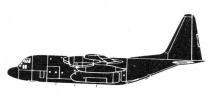Incident Overview

Description
The aircraft departed Cologne-Bonn Airport on a charter taxi flight to Lbeck-Blankensee, carrying two passengers, among them the Minister-President of the Land of Schleswig-Holstein Uwe Barschel and a crew of two. The approach to Lbeck-Blankensee Airport was initiated in marginal weather conditions with limited visibility to 1,500 meters and a ceiling down to 150 meters. ILS approach was not possible so the crew attempted to land under VFR. On final, the aircraft struck the NDB antenna (15 meters high) located 480 meters short of runway threshold. The aircraft rolled to the left to an angle of 90ø, causing the left wing to struck the ground. Out of control, the aircraft crashed then slid for few dozen meters and came to rest, bursting into flames. One of the passengers was Uwe Barschel, the Minister-President of Schleswig-Holstein, Germany. The copilot, Elizabeth Friske, was also the first officer of Pan International?s BAC One-Eleven flight 112 on September 6, 1971 that was forced to an emergency landing on the Hamburg-Flensburg section of Autobahn A7 (E45) just after take-off from Hamburg Airport due to a maintenance error, whereby kerosene had been mistakenly sprayed into the water-cooled engines of the BAC One-Eleven.
Source of Information
https://en.m.wikipedia.org/wiki/Paninternational_Flight_112https://en.m.wikipedia.org/wiki/Paninternational_Flight_112Primary Cause
NDB antenna collision during approach.NDB antenna collision during approach.Share on:





